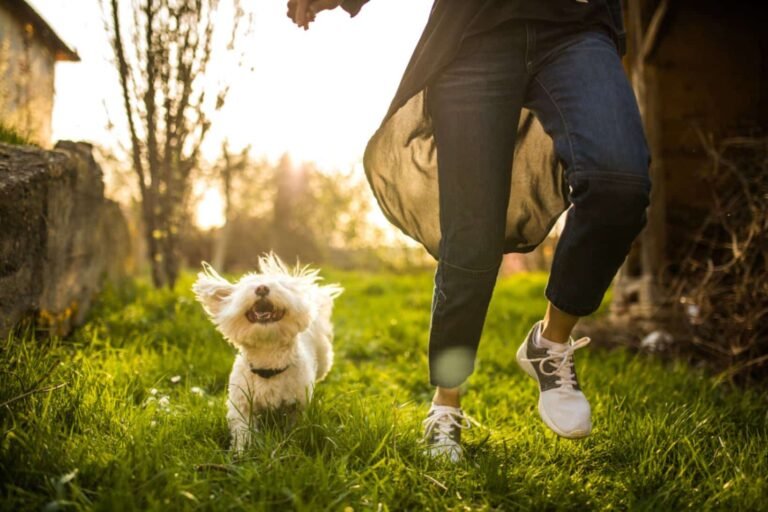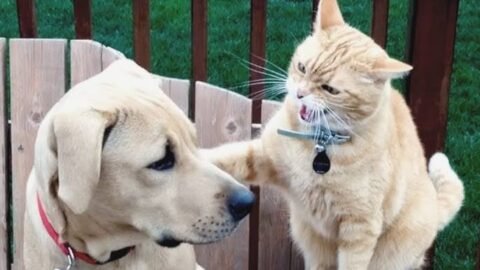Introducing a new pet into your home is an exciting yet delicate process, especially if you already have an existing pet. While the idea of expanding your furry family can be thrilling, it’s important to consider how your current pet will react to this change.
Adopting a second pet can sometimes lead to anxiety or stress for the resident pet, who may feel threatened or unsure about the new addition. This article explores strategies to help your existing pet adjust and manage anxiety when welcoming a new companion into your home.
Understanding Pet Anxiety: What Causes It?
Pets, like humans, can experience anxiety when faced with change. The introduction of a new pet disrupts the established routine and environment, leading to feelings of insecurity. This anxiety can manifest in various ways, such as changes in behavior, appetite, or sleep patterns. Understanding the root causes of this anxiety is the first step in helping your pet adjust to the new situation
Pets are creatures of habit. They thrive in environments where they feel safe and know what to expect. When a new pet enters the home, it can upset this sense of stability. The existing pet may perceive the newcomer as a threat to their territory, resources, or even their relationship with you. This perceived competition can lead to anxiety, as your pet struggles to understand the new dynamics.
Signs of Anxiety in Your Existing Pet
Recognizing the signs of anxiety in your existing pet is crucial to addressing the issue promptly. Common signs of anxiety include:
- Increased vocalization, such as barking or meowing.
- Destructive behavior, like chewing furniture or scratching doors.
- Changes in eating habits, either overeating or loss of appetite.
- Withdrawal from social interactions or increased hiding.
- Restlessness, pacing, or difficulty settling down.
- Aggressive behavior towards the new pet or even humans.
If you notice any of these signs, it’s important to take action to help your pet feel more comfortable and secure. Early intervention can prevent the anxiety from escalating and create a smoother transition for both pets.
Preparing Your Home for the New Pet
Before bringing a new pet home, it’s essential to prepare your existing pet for the upcoming changes. Start by gradually introducing the concept of a new pet. Use items like a blanket or toy from the new pet to familiarize your existing pet with their scent. This can help reduce the shock of a new presence in the home.
Creating separate spaces for each pet can also help ease the transition. Designate areas where each pet can retreat when they need time alone. This ensures that your existing pet doesn’t feel crowded or overwhelmed by the newcomer. Over time, as both pets become more comfortable, you can allow them to share spaces.
Another consideration is the use of an invisible fencing system for dogs. This can help manage the pets’ interactions, particularly in outdoor spaces. By providing clear boundaries, invisible fencing for dogs can reduce the chances of territorial disputes and help both pets feel more secure in their environment.
Introducing the New Pet: A Gradual Approach
Introducing a new pet to your existing pet should be done gradually to minimize stress and anxiety. Start by allowing them to see and sniff each other from a distance, without direct contact. This can be done by using baby gates or keeping one pet in a crate while the other roams freely. This initial introduction allows both pets to become familiar with each other’s presence without feeling threatened.
As the pets become more comfortable, you can allow brief, supervised interactions. Keep these sessions short and positive, rewarding both pets with treats and praise. If either pet shows signs of aggression or anxiety, separate them and try again later. Patience is key during this process; rushing the introduction can lead to increased tension and anxiety.
During these interactions, it’s important to remain calm and positive. Pets can pick up on your emotions, so maintaining a relaxed demeanor can help them feel more at ease. Consistent, positive reinforcement will encourage both pets to associate the new situation with good experiences.
Maintaining Routine and Consistency
One of the best ways to reduce anxiety in your existing pet is to maintain as much of their routine as possible. Changes in feeding times, walks, or play sessions can add to their stress. Keeping their daily schedule consistent provides a sense of normalcy and security.
Ensure that your existing pet still receives plenty of attention and affection during this transition. It’s easy to become focused on the new pet, but neglecting your existing pet can exacerbate their anxiety. Regular one-on-one time with your existing pet reassures them that they are still valued and loved.
Consistency in discipline and training is also crucial. Both pets need to understand the household rules and boundaries. This consistency helps prevent confusion and potential conflicts between the pets. Reinforce positive behaviors with rewards, and address negative behaviors calmly and consistently.
Managing Resources: Food, Toys, and Space
Resource management is another critical aspect of reducing anxiety when introducing a new pet. Resources like food, toys, and space can become points of contention between pets, leading to increased anxiety and potential aggression.
Ensure that each pet has its own set of resources. Separate feeding areas can prevent food-related conflicts while providing each pet with its own toys can reduce competition. Additionally, ensure that each pet has its own space where it can retreat when it needs some alone time.
Over time, as the pets become more comfortable with each other, they may naturally begin to share resources. However, it’s important not to force this sharing, as it can lead to increased tension. Allow the pets to decide when they are ready to share, and continue to monitor their interactions closely.
The Role of Training and Socialization
Training plays a vital role in helping your existing pet adjust to a new companion. Basic obedience training can provide structure and help your pet feel more secure in the presence of the new pet. Commands like “sit,” “stay,” and “leave it” can be particularly useful in managing interactions between pets.
Socialization is equally important. If your existing pet is not used to being around other animals, the introduction of a new pet can be overwhelming. Gradually exposing them to other animals in controlled settings, such as dog parks or training classes, can help build their confidence and reduce anxiety.
Positive reinforcement is key in both training and socialization. Reward your pet for calm, positive behavior around the new pet. This reinforces the idea that the new pet is not a threat but rather a positive addition to their environment.
Addressing Anxiety: Calming Techniques and Products
If your pet continues to struggle with anxiety despite your best efforts, some additional techniques and products can help. Calming products, such as pheromone diffusers, anxiety wraps, and calming supplements, can provide extra support during the transition.
Pheromone diffusers release synthetic versions of the calming pheromones that pets naturally produce. These diffusers can create a more relaxed environment, helping both pets feel more at ease. Anxiety wraps, which apply gentle pressure to the pet’s body, can also provide comfort and reduce stress.
In some cases, your veterinarian may recommend calming supplements or medications. These should only be used under the guidance of a professional, as they are intended to be a short-term solution while you work on behavioral strategies.
The Importance of Patience and Time
Adjusting to a new pet takes time, and it’s important to be patient throughout the process. Every pet is different, and some may take longer to adjust than others. Rushing the introduction or forcing interactions can lead to setbacks and increased anxiety.
Allow your pets to progress at their own pace. Celebrate small victories, such as calm interactions or shared playtime, and don’t be discouraged by setbacks. With time, patience, and consistent effort, most pets can learn to coexist peacefully and even form strong bonds with each other.
Monitoring Progress and Seeking Professional Help
Throughout the introduction process, it’s important to monitor your pets’ progress closely. Track any changes in behavior, appetite, or energy levels. If you notice persistent signs of anxiety or aggression, it may be time to seek professional help.
A professional animal behaviorist or trainer can provide personalized strategies to address your pets’ specific needs. They can help identify underlying issues that may be contributing to the anxiety and develop a plan to help both pets adjust more effectively.
In some cases, professional intervention may be necessary to ensure the safety and well-being of both pets. Don’t hesitate to seek help if you feel overwhelmed or if your pets’ anxiety is not improving.
Building a Harmonious Household
Successfully integrating a new pet into your home requires effort, patience, and understanding. By taking the time to prepare your existing pet, managing their anxiety, and fostering positive interactions, you can build a harmonious household where both pets feel secure and loved.
Remember that the goal is not just peaceful coexistence but also the development of a strong bond between your pets. With the right approach, your pets can become companions, playmates, and even best friends, enriching each other’s lives and bringing even more joy to your home.
Adopting a second pet is a significant decision that requires careful consideration and planning. By focusing on your existing pet’s needs, maintaining consistency, and utilizing calming techniques and products like invisible fencing for dogs, you can create a supportive environment that eases anxiety and promotes a positive transition. With time, patience, and love, your furry family can grow closer, creating lasting memories and a happy, harmonious home.

Daniel J. Morgan is the founder of Invidiata Magazine, a premier publication showcasing luxury living, arts, and culture. With a passion for excellence, Daniel has established the magazine as a beacon of sophistication and refinement, captivating discerning audiences worldwide.





